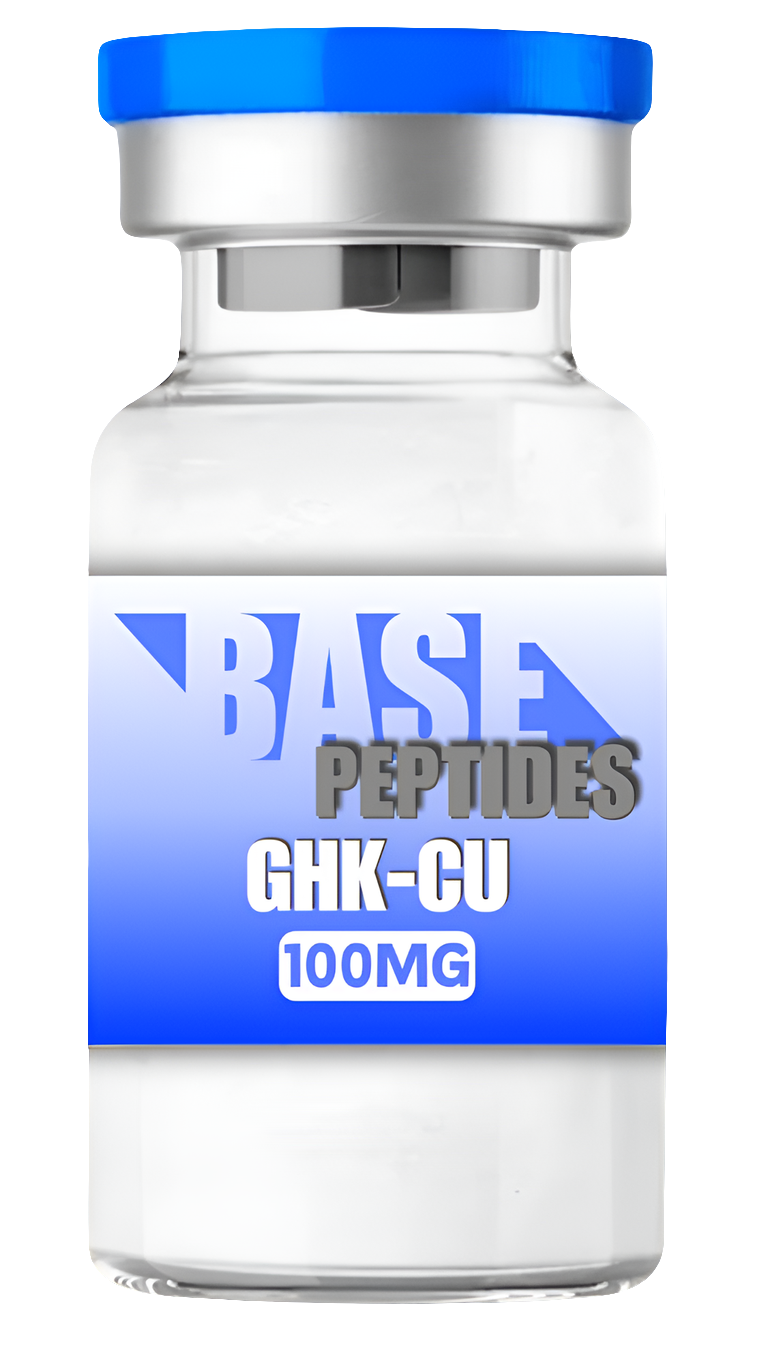GHK-CU Copper Peptide
GHK-CU Copper Peptide
Couldn't load pickup availability
GHK-Cu (Copper Peptide)
Primary Function: Skin regeneration, wound healing, hair growth, anti-aging
Research Use: Dermatological repair, anti-inflammatory pathways, tissue remodeling
Molecular Formula: C14H24N6O4Cu
CAS Number: 89030-95-5
Synonyms: Copper Tripeptide-1, Gly-His-Lys-Cu²⁺
Description:
GHK-Cu is a naturally occurring copper-binding tripeptide composed of glycine, histidine, and lysine. Known for its remarkable regenerative properties, GHK-Cu has been extensively studied for skin healing, hair regrowth, collagen synthesis, and anti-inflammatory effects. It is one of the most respected peptides in cosmetic and wound-healing research due to its ability to stimulate fibroblast activity, increase angiogenesis, and remodel damaged tissues.
Mechanism of Action:
- Binds free copper ions and delivers them into cells
- Stimulates collagen and glycosaminoglycan synthesis
- Enhances angiogenesis and fibroblast proliferation
- Reduces oxidative stress and inflammation in damaged tissue
Key Research Areas:
- Skin rejuvenation and wrinkle reduction
- Hair follicle stimulation and scalp health
- Accelerated wound healing and scar remodeling
- Inflammatory modulation and antioxidant support
History of Discovery:
GHK-Cu was discovered in 1973 by Dr. Loren Pickart, who identified its presence in human plasma and later linked it to tissue regeneration and repair. It has since become a foundational molecule in cosmetic and medical research for reversing signs of aging and promoting cellular healing.
Case Studies:
- Skin Remodeling and Wrinkle Repair (2005, Int J Cosmet Sci): GHK-Cu improved skin tightness, reduced wrinkle depth, and increased collagen density in aging skin over 12 weeks. [Int J Cosmet Sci. 2005;27(5):327–338.]
- Hair Growth Promotion (2007, J Invest Dermatol): GHK-Cu stimulated hair follicle enlargement and prolonged the anagen phase in animal models. [J Invest Dermatol. 2007;127(5):1121–1129.]
- Wound Healing Acceleration (1999, Mol Cell Biochem): Demonstrated faster wound closure and higher quality tissue regeneration in dermal wound studies. [Mol Cell Biochem. 1999;188(1-2):33–38.]
Packaging Information:
- Form: Lyophilized powder or pre-mixed solution
- Purity: ≥ 99%
- Storage: Store at -20°C in a dry, dark environment
- For research use only. Not for human or veterinary use.
















